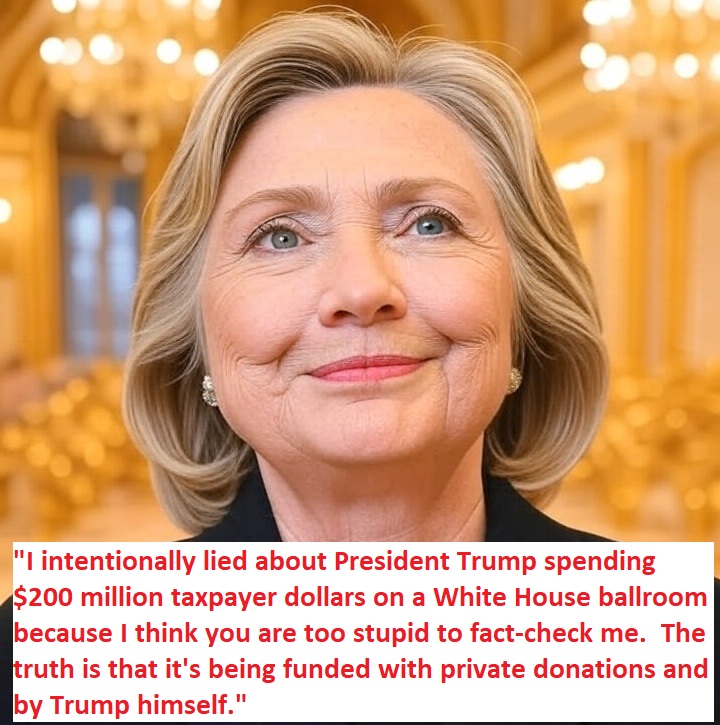The gullible, swayed by a single tweet, keep the narrative alive, shrugging off corrections as they cling to what they want to believe.

In early August 2025, former Secretary of State Hillary Clinton posted a tweet on X that exploded across the platform, racking up millions of views: “Most Americans are worried about the cost of groceries. Meanwhile, Trump is spending $200 million of taxpayers’ money to build a golden ballroom.”
Paired with a flashy image of opulence, the post painted President Donald Trump as a reckless spendthrift, splashing public funds on a lavish pet project while ordinary people struggled with bills.
The claim, however, wasn’t just wrong—it was a deliberate lie, crafted to exploit partisan divides and the viral nature of social media, where falsehoods take hold among the gullible and outlast any effort to correct them.
The reality of the White House State Ballroom is clear-cut. Unveiled in late July 2025, the 90,000-square-foot addition replaces the East Wing, offering a permanent venue for state dinners that can seat 650 guests—triple the capacity of the current East Room. Trump, a real estate mogul turned president, has long pushed for such an upgrade, even offering to fund it years ago. The key detail: the $200 million project is entirely funded by private donations, led by Trump himself and other wealthy contributors.
The only public expense involves standard security upgrades, a routine cost not tied to the ballroom’s construction. This was widely reported, easily accessible, and unambiguous. Clinton’s tweet, dropped days after the announcement, ignored these facts simply because, as usual, she lied.
As a veteran politician with access to news and briefings, she could hardly plead ignorance. The claim echoed similar distortions from other Democrats, like Senate Minority Leader Chuck Schumer, who also hinted at taxpayer funding. Critics on X swiftly called out the falsehood, pointing to the private donations and branding it “fake news.” Yet, the tweet amassed thousands of likes and reposts, spreading the lie faster than corrections could travel.
Many users, predisposed to distrust Trump, embraced the narrative without a second thought.
Why would Clinton lie?
In X’s outrage-driven ecosystem, where algorithms amplify divisive content, the claim was a masterstroke of manipulation. It tapped into class resentment, casting Trump as an out-of-touch elitist while rallying her base against him. For the gullible—those already skeptical of Trump—the tweet was catnip, a ready-made story too compelling to fact-check.
Research shows that once misinformation takes root, especially from a trusted figure like Clinton, it’s hard to dislodge. People cling to familiar narratives, dismissing corrections as partisan spin. Replies citing official statements or fact-checks were buried or ignored, lost in the platform’s echo chamber.
This wasn’t a one-off error but a calculated move. Clinton, no stranger to political spin, knows the power of a viral lie in a fractured media landscape. Her tweet leveraged the “illusory truth effect,” where repetition breeds belief, even when evidence contradicts it. While some might argue she was merely careless, the timing and framing suggest intent—a jab meant to stick, regardless of truth.
The ballroom, with its gold accents evoking Trump’s Mar-a-Lago, may invite debate about extravagance, but the taxpayer funding claim is baseless.
By October 2025, the ballroom’s construction is underway, fully privately funded, yet Clinton’s tweet lingers as a case study in deception. It sidesteps legitimate debates—like federal budget priorities—in favor of a cheap shot designed to inflame. In today’s “post-truth” world, such lies erode trust, thriving on the willingness of some to accept a comforting falsehood over inconvenient facts.



